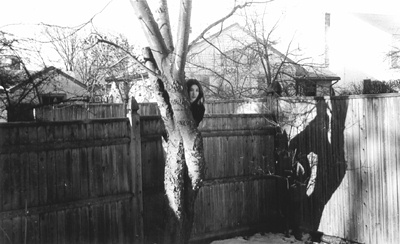All Nonfiction
- Bullying
- Books
- Academic
- Author Interviews
- Celebrity interviews
- College Articles
- College Essays
- Educator of the Year
- Heroes
- Interviews
- Memoir
- Personal Experience
- Sports
- Travel & Culture
All Opinions
- Bullying
- Current Events / Politics
- Discrimination
- Drugs / Alcohol / Smoking
- Entertainment / Celebrities
- Environment
- Love / Relationships
- Movies / Music / TV
- Pop Culture / Trends
- School / College
- Social Issues / Civics
- Spirituality / Religion
- Sports / Hobbies
All Hot Topics
- Bullying
- Community Service
- Environment
- Health
- Letters to the Editor
- Pride & Prejudice
- What Matters
- Back
Summer Guide
- Program Links
- Program Reviews
- Back
College Guide
- College Links
- College Reviews
- College Essays
- College Articles
- Back
Encolosures of Fear
In literature, houses are seldom portrayed as bodies of limitation and illusion. They are perceived as consoling, essential, magnificent, and perhaps limiting. Nature provides shelter enough for mankind, though desires for familiarity and control caused houses to evolve. Fear, portrayed in need and power, is imminent. Thus, structural buildings, in reality, symbolise the well concealed human weakness. Broad expanses exist too often in prairies, plains, forests, and tropics. Oceans extend toward blue heavens. Possibilities of change depend upon the present, as do weather alterations. Towering over humans are trees and canyons, creating a feeling of helplessness and triviality for mankind that causes the need for distraction. Smaller, more adapted enclosures tend to provide tranquility, away from an othersise overwhelmingly volatile, grandiose world. Therefore, the bold, manmade structure of houses merely convey human fear of the uncontrollable.
With natural fear in human blood runs an eccentric desire for control. Weather and animal behaviors cannot be harnessed, for the notions of predator and prey, snow and rain lie beyond mortal decision. Additionally, adapting is both painful and difficult, for the arrogance in human beings calls for their surroundings and situations to change, rather than the willingness to change themselves. Therefore, a house serves as a uniform, controlled enclosure that thrusts reigns into powerful hands.
In conclusion, control and destruction lie at the feet of fear, causing a need for houses. Modernity's doors open onto cities, no longer moors and lakes. The world has morphed, and the sun that is respected is the bulb that ignites upon the flicking of a powerless wrist.

Similar Articles
JOIN THE DISCUSSION
This article has 0 comments.

This piece is for Mrs. Kohn.